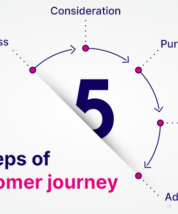Introduction
In this context, Meta’s Conversion API offers a solution to accurately track user actions and conversions. In this article, we’ll explore how the Meta Conversion API works and the key benefits it provides for advertisers.
Understanding the Meta Conversion API
The Meta Conversion API is an API made available by Meta which acts as a direct communication bridge between your website or app and Meta's ad platform. It enables you to send customer journey data (such as purchase data or adding items to a cart) directly from your servers to Meta’s server. Thus bypassing browser limitations and privacy restrictions that can hinder traditional tracking methods like the Meta Pixel.
Key Advantages of the Meta Conversion API
The first benefit is that the Meta Conversion API provides a significant boost to data reliability by collecting information server-side, hence offering a more accurate and comprehensive view of user behavior. For example, with CAPI a business can track conversions, such as purchases or sign-ups, even if users opt out of browser tracking. This ensures a more complete picture of campaign performance, leading to better optimization.
Another major advantage is the API’s ability to enhance targeting capabilities. By leveraging richer customer data, advertisers can create more targeted audiences and deliver personalized ads with greater relevance and engagement.
Lastly, the Meta Conversion API strengthens privacy compliance and reduces costs. It adapts to the evolving data privacy regulations by collecting information in alignment with user privacy settings, ensuring that businesses can stay compliant. For example, a brand running Meta ads in regions with strict data privacy laws like the EU can use the API to maintain compliance while optimizing ad delivery to reduce cost per acquisition. Read our blog post about the positive impact of the Meta Conversion API
Meta Conversion API vs. Meta Pixel: A Complementary Duo
The key difference between the Meta Pixel and the Meta Conversion API lies in how they send conversion data to Facebook servers. The Meta Pixel transmits data via the browser, which, as we’ve seen, is becoming less reliable due to privacy restrictions and browser limitations. On the other hand, the Meta Conversion API sends data server-to-server, bypassing these challenges and ensuring more accurate tracking. This is crucial for Meta’s algorithms because conversion events, such as page views and purchases, are key to improving attribution, ad measurement, and optimization.
That’s why using both tools in tandem can significantly enhance your advertising efforts. The Meta Conversion API provides a strong foundation for reliable data collection, while the Pixel complements it by offering additional data points and a simplified setup, especially for businesses with limited developer resources. This dual approach ensures a more complete view of user actions, allowing Meta’s algorithms to work with richer data, improving ad targeting, decreasing cost per action, and delivering a better return on ad spend (ROAS). Though the Conversion API may require more technical effort to set up, it enables advertisers to send more reliable conversion data, including first-party information, helping to close the feedback loop and ultimately optimizing ad spend for better outcomes.
Implementing the Meta Conversion API: Navigating the Options
Good news: Implementing the Meta Conversion API can be tailored to fit the specific needs and technical capabilities of your business. Whether you have a dedicated development team or rely on existing tools like Google Tag Manager, we’ll explore below the different options available to streamline the process:
- Direct Integration: This method involves coding the API directly into your website or app's server-side code. It requires developer skills but offers the most control and flexibility.
- Google Tag Manager (GTM): If you already use GTM, you can leverage its server-side tagging capabilities to implement the Meta Conversion API without modifying your website or app's code.
- API Gateway: For those managing multiple websites or apps, an API gateway can serve as a centralized hub for handling Meta Conversion API requests, simplifying management and reducing code duplication.
Unlocking the Power of the Meta Conversion API
Thanks to the Meta Conversion API, businesses can effectively track and optimize conversions across various platforms. It allows for seamless monitoring of the conversions on your website and mobile app as well as capturing key events like form submissions or purchases. Additionally, the API allows you to connect offline sales data, such as in-store purchases or phone orders, to your Meta Ads campaigns, providing a comprehensive view of customer behavior. This holistic approach ensures that all touchpoints in the customer journey are accounted for, enhancing your advertising effectiveness.
Furthermore, the Meta Conversion API supports data enrichment by allowing you to enhance conversion data with valuable customer information, such as emails and purchase details. This added context leads to deeper insights and facilitates the creation of custom audiences based on conversion events, helping you reach high-value customers with more relevant and targeted ads.
Conclusion
As cookies lose effectiveness due to privacy regulations and ad blockers, businesses must embrace server-side tracking. This shift, highlighted by tools like the Meta Conversion API, allows for reliable data collection and improved targeting without relying on browser methods.
At Eminence, we recognize these challenges and are dedicated to helping our clients navigate this new landscape. Our expertise empowers you to unlock valuable insights and optimize your advertising strategies for growth in a cookie-less world.







